Immense Tuscany and not for the geographical dimension, remarkable; great for landscape features, works, uses, products that are, to an extent without the possibility of comparison, "marked" by the continued presence precisely, compelling and multifaceted, human individual, and then, in turn, diverse and changing.
Tuscans are, as always, in the programmatic controversy with one another, the one for the other, the one against the other. Guelphs and Ghibellines Guelphs and White Guelphs blacks; great Ghibellines and the Ghibellines minimum - moguls, merchants and craftsmen, major and minor arts; fat and minutes in each "phenomenon" of Tuscany highlights the extreme individualism, in a continuous overlapping, unite and divide, differentiate, define, propose and challenge. Of "dieting him" cities, villages, men, three hills a state, a handful of houses free town, a game the prize.
Benedetti. It is from this unyielding desire for independence originate churches, palaces, monuments, driven always best to affirm their "part".
Is no place in Tuscany, however small and poor and distant and isolated, when you do not wait for the surprise of a polyptych, a stove, a fresco, worthy, for magnificence of art, to appear in cathedrals or in collections towns (remember at this moment and realize the words of Voltaire: to be free means to be able).
The same characters in the uses - subject, as usual, our greater interest - "to the table." A kitchen straight, male, and without hesitation, from which we can not measure the flame of fragrant woods.
Outside, just out, wherever you go, I can not stand the empire of its insignia: Tuscan restaurant, trattoria in Tuscany, Tuscan cooking Tuscan tavern. But how, you the simplest of kitchens in Italy, the most faithful to the product first, whether the Sorana beans and peas Empoli, are wide of the chops "calves of the valley," you ready to compromise in any fire "foreign "? To hell. No kitchen just like this all focuses on the immediate cooking, skewer and grill, and all the products of a hill happy; demands to be enjoyed in place, in the shade of the olive magic of Serre di Rapolano (amazes you his yellow oil golden with greenish hues, savory and deliciously fruity, full-bodied but not fat free and stripped of all its acidity, really virgin virginity of a thousand and one) or in view of the vineyards, and strenuous toil, the hills of Chianti scarce and stingy.
By virtue of its excellent environmental conditions, geological and climatic conditions, Tuscany is among the Italian regions better prepared for the cultivation of the vine.
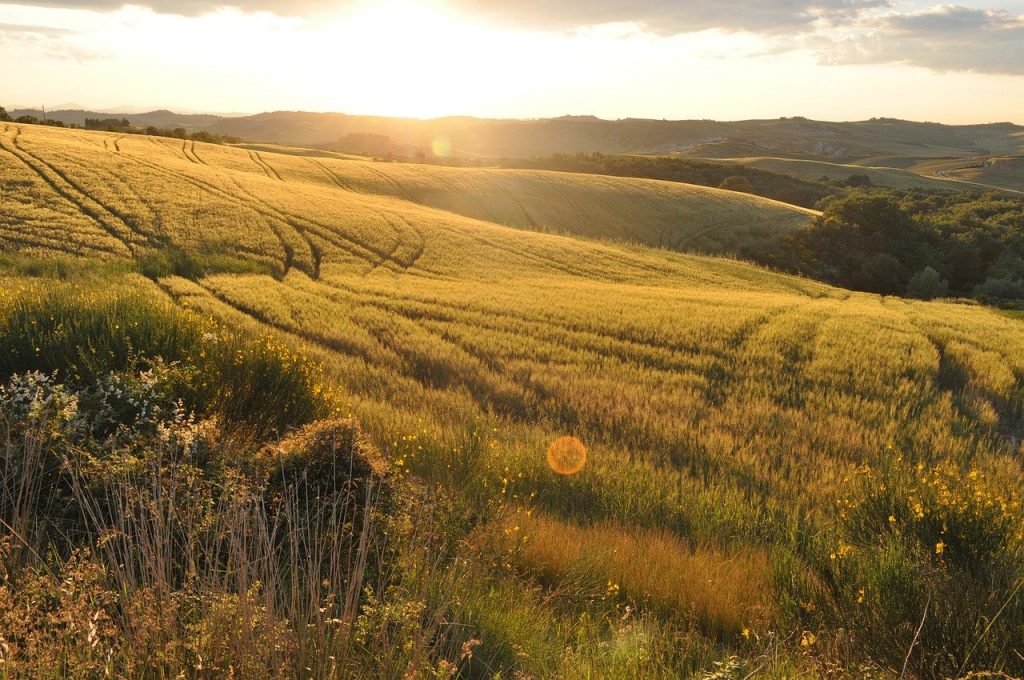 Some tens of thousands of years ago Tuscany was covered with large lakes and a large coastal area was under the sea.
All territories of its major cities, with the exception of that of Siena, were at that time under water, while the hills behind Livorno and Lucca were islands or strips of land outcropping in this sea, so that their slopes are are still the remains of fish and shells, fossils and even small branches of coral. Grosse islands were also the promontory of Piombino and Monte Argentario
With the drying up of lakes and the formation of river basins, the ride to the valley of the rivers larger then accumulated debris and alluvial deposits in the lower areas, forming the different plains of Tuscany, where today there are those Grosseto, Pisa, Florence and Pistoia.
With the retreat of the sea were deposited along the coast swathes of sand and clay (ie the one corresponding to the current Versilia) where the water was stagnant and marshy landscape influencing the infected plant and animal evolution, besides of course the human settlements.
Other marshes formed in the meantime also inland, in the Val di Chiana and the Arno valley between lower and Bientina Fucecchio.
In the long period of glaciation (quaternary old) small glacial deposits were formed under the highest peaks of the Apennines and occurred at the same time important volcanic phenomena traces of which remain evident especially in the southern part of the region, which is still dominated by Mount Amiata ( 1770 m asl), a large extinct volcano and lava formations dotted (Roccastrada, Campiglia Marittima, Capraia), of imposing tuff outcrops (Sorano, Pitigliano) and reserves of compressed steam fumaroles that erupt in Larderello and heat sources in the Val d'Orcia.
At various stages prehistoric, from Middle Paleolithic to the Iron Age, human settlements have left their mark numerous and widespread (near Arezzo, in Mugello, in the Apuan Alps, near Talamone, in Cortona, Montespertoli, Pomarance) in caves and rock crevices.
At that time men lived grouped into tribal forms in the woods near lakes and streams, in slopes protected from the dangers of the huge and unhealthy swamps.
Of these people was grafted, around the first millennium BC, the more defined and mature civilization of the Etruscans
Some tens of thousands of years ago Tuscany was covered with large lakes and a large coastal area was under the sea.
All territories of its major cities, with the exception of that of Siena, were at that time under water, while the hills behind Livorno and Lucca were islands or strips of land outcropping in this sea, so that their slopes are are still the remains of fish and shells, fossils and even small branches of coral. Grosse islands were also the promontory of Piombino and Monte Argentario
With the drying up of lakes and the formation of river basins, the ride to the valley of the rivers larger then accumulated debris and alluvial deposits in the lower areas, forming the different plains of Tuscany, where today there are those Grosseto, Pisa, Florence and Pistoia.
With the retreat of the sea were deposited along the coast swathes of sand and clay (ie the one corresponding to the current Versilia) where the water was stagnant and marshy landscape influencing the infected plant and animal evolution, besides of course the human settlements.
Other marshes formed in the meantime also inland, in the Val di Chiana and the Arno valley between lower and Bientina Fucecchio.
In the long period of glaciation (quaternary old) small glacial deposits were formed under the highest peaks of the Apennines and occurred at the same time important volcanic phenomena traces of which remain evident especially in the southern part of the region, which is still dominated by Mount Amiata ( 1770 m asl), a large extinct volcano and lava formations dotted (Roccastrada, Campiglia Marittima, Capraia), of imposing tuff outcrops (Sorano, Pitigliano) and reserves of compressed steam fumaroles that erupt in Larderello and heat sources in the Val d'Orcia.
At various stages prehistoric, from Middle Paleolithic to the Iron Age, human settlements have left their mark numerous and widespread (near Arezzo, in Mugello, in the Apuan Alps, near Talamone, in Cortona, Montespertoli, Pomarance) in caves and rock crevices.
At that time men lived grouped into tribal forms in the woods near lakes and streams, in slopes protected from the dangers of the huge and unhealthy swamps.
Of these people was grafted, around the first millennium BC, the more defined and mature civilization of the Etruscans
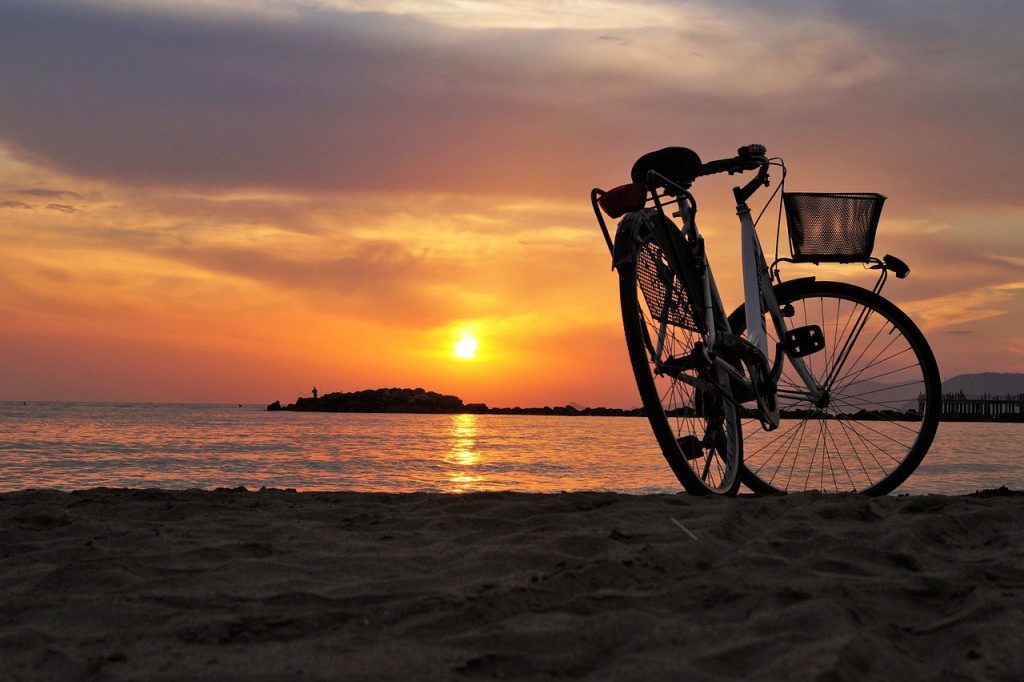 Invaders, warriors or merchants industrious, western or come from the Far East, the Etruscans represented the first root of the homogeneous region.
First settled between the Arno and Tiber and expanded as a result of a much greater territory of the Tuscany, Umbria and also includes part of Lazio, as far north as the present-day Liguria.
The first contribution of Tuscany to European civilization is marked by extraordinary creativity and entrepreneurship of the Etruscan people.
The exploitation of the fertile valleys and metal mines, together with the development of trade, strongly characterized the civilization of this people rich imagination, religious and artistic inspiration. The Etruscans must be the first political organization, the first civil development and the first systematic economic exploitation of the Tuscan territory.
They transformed the dispersed prehistoric settlements in the city whose life has developed over the centuries to the contemporary age.
Cities such as Chiusi, Volterra, Cortona, Arezzo, Fiesole, Artimino, Comeana have a continuity of three millennia, apart from Greece, can not boast of any other region in Europe.
The Etruscans never formed a true unitary state; their system is founded (as also that of the Greeks) on the coexistence of autonomous cities and sometimes even fighting among themselves.
However there was, in this population, a strong sense of national unity and religious in the seventh century BC Etruscan hegemony extended over most of northern and central (even licking the Po valley) even to the point check Corsica.
The characters of this civilization is, however stemperarono quickly. Already in the fifth century began the decline, due to the inability to resist the strong pressure coming from the sea (at the hands of the Greeks and Carthage), both from the ground (by the Gauls and the Romans).
Retired gradually, the Etruscans finally succumbed to the supremacy of Rome.
The Romans imposed their rule in Tuscany at the dawn of the third century BC, among the last Samnite Wars and the War punishes. Although at times hindered or slowed by alliances with the Etruscans in the Gauls, the conquest was also favored, not infrequently, by the friendship of some Etruscan cities such as Arezzo, Cortona and Perugia.
It can not be said, however, that the romanization completely extinguished the great civilization existing on the soil of Tuscany, as more than a little of it pierced in the new conquerors. The ruling class was gradually absorbed into the Roman Etruscan, even for language: in the last century BC Etruscan is almost entirely supplanted by the Latin, because of strong immigration of settlers who innovated deeply he founded the cities old or new. In the first century of domination of the region continued to flourish favored by the Roman government. The territory was largely ordered according to the system of the federation, which left a certain formal autonomy to the cities and which lasted until the grant of Roman citizenship to all the Italic peoples (91 BC).
Invaders, warriors or merchants industrious, western or come from the Far East, the Etruscans represented the first root of the homogeneous region.
First settled between the Arno and Tiber and expanded as a result of a much greater territory of the Tuscany, Umbria and also includes part of Lazio, as far north as the present-day Liguria.
The first contribution of Tuscany to European civilization is marked by extraordinary creativity and entrepreneurship of the Etruscan people.
The exploitation of the fertile valleys and metal mines, together with the development of trade, strongly characterized the civilization of this people rich imagination, religious and artistic inspiration. The Etruscans must be the first political organization, the first civil development and the first systematic economic exploitation of the Tuscan territory.
They transformed the dispersed prehistoric settlements in the city whose life has developed over the centuries to the contemporary age.
Cities such as Chiusi, Volterra, Cortona, Arezzo, Fiesole, Artimino, Comeana have a continuity of three millennia, apart from Greece, can not boast of any other region in Europe.
The Etruscans never formed a true unitary state; their system is founded (as also that of the Greeks) on the coexistence of autonomous cities and sometimes even fighting among themselves.
However there was, in this population, a strong sense of national unity and religious in the seventh century BC Etruscan hegemony extended over most of northern and central (even licking the Po valley) even to the point check Corsica.
The characters of this civilization is, however stemperarono quickly. Already in the fifth century began the decline, due to the inability to resist the strong pressure coming from the sea (at the hands of the Greeks and Carthage), both from the ground (by the Gauls and the Romans).
Retired gradually, the Etruscans finally succumbed to the supremacy of Rome.
The Romans imposed their rule in Tuscany at the dawn of the third century BC, among the last Samnite Wars and the War punishes. Although at times hindered or slowed by alliances with the Etruscans in the Gauls, the conquest was also favored, not infrequently, by the friendship of some Etruscan cities such as Arezzo, Cortona and Perugia.
It can not be said, however, that the romanization completely extinguished the great civilization existing on the soil of Tuscany, as more than a little of it pierced in the new conquerors. The ruling class was gradually absorbed into the Roman Etruscan, even for language: in the last century BC Etruscan is almost entirely supplanted by the Latin, because of strong immigration of settlers who innovated deeply he founded the cities old or new. In the first century of domination of the region continued to flourish favored by the Roman government. The territory was largely ordered according to the system of the federation, which left a certain formal autonomy to the cities and which lasted until the grant of Roman citizenship to all the Italic peoples (91 BC).
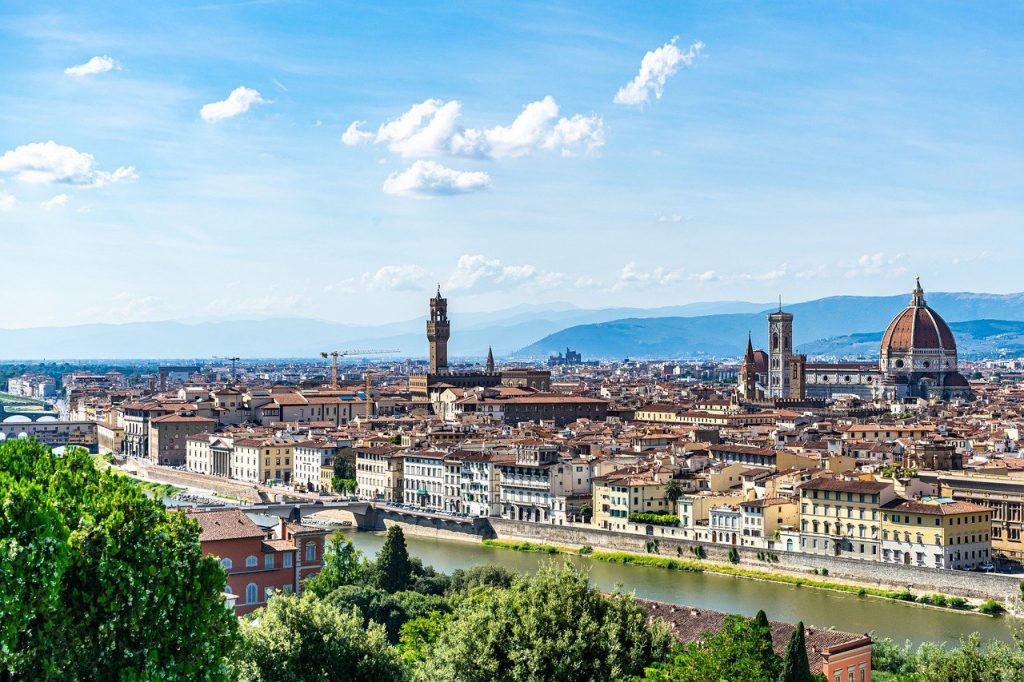 Rome also gave special impetus to public works and especially to the major roads that joining to Urbe Etruria and, hence, to Cisalpine Gaul. Among these, the Via Aurelia (along the sea), the Clodia (which was connected to Aurelia from Veii), Cassia (from Rome to Fiesole) and Flaminia (which crossed the Apennines down to Arezzo Emilia).
Nevertheless, in the last period of the Republican Etruria underwent a decay more and more pronounced. Factors contributing to this decline were both the civil wars of the Romans (which had its own theater in Etruria), and the scourge of malaria, widespread on the coastal strip.
To this was added the crisis of culture in wheat (no longer profitable for imports from the Orient and Egypt) and mining. At the beginning of the imperial Etruria thus appeared to be a region subject to a strong decline and depopulation.
The Emperor Augustus tried, with appropriate laws, to revive the fortunes of the region constituting the Etruria "VII region," having as the northern border Tuscan-Emilian Apennines and the Tiber River to the southern border. At the end of the third century the emperor Diocletian introduced a new system: Etruria (which already was called "Tuscia") was administratively united Umbria.
At the head of the region was a place "Corrector", which was based in Florentia. Later, at the end of the empire, the northern part of Etruria was later united with Emilia.
The first barbarian hordes represented in Tuscany just passing storms. A new era for Tuscany opened with the Lombard conquest, which gave the region a political and military importance as a border land to the Byzantine dominions. The Lombard settlements in Tuscany were relatively strong in Lucca, in the Garfagnana, in the Lunigiana, in Pistoia, in Prato, in Siena and in the manhole.
The Lombard rule also brought a small revolution road. The Via Cassia, too exposed to attack Byzantine and made difficult from rising groundwater della Chiana, was replaced by a new path (the current one) for Radicofani, Siena, the Val d'Elsa, Lucca. This meant the inexorable decay of Chiusi, a certain eclipse of Florence and the progress of Siena. The new route became, along with the Flaminia, the most important of Central Italy by pilgrims (hence the name of Via Francigena or Romea) and also by great characters. The journey was punctuated by hospices and supervised, in the most difficult, the Abbot of St. Saviour on Mount Amiata, then the largest monastic center of Tuscany.
The Franks (774-888) did not alter substantially this situation. For the Lombard lords were replaced or added lords francs or even other Germanic tribes.
Meanwhile, the coastal zone fell more and more into disuse, even for raids from the sea of the Saracens and the Normans. Only Pisa resisted, keeping in touch with Corsica and Sardinia. The feudal Tuscany was never a unified political aggregate, especially from the mid-eleventh century when individual cities (Pisa, Siena, Florence, Pistoia, Prato and Arezzo) began to emerge and represent their own instances. Declined from Lucca to Pisa, which he obtained naval successes against the Saracens of Africa and Spain.
Rome also gave special impetus to public works and especially to the major roads that joining to Urbe Etruria and, hence, to Cisalpine Gaul. Among these, the Via Aurelia (along the sea), the Clodia (which was connected to Aurelia from Veii), Cassia (from Rome to Fiesole) and Flaminia (which crossed the Apennines down to Arezzo Emilia).
Nevertheless, in the last period of the Republican Etruria underwent a decay more and more pronounced. Factors contributing to this decline were both the civil wars of the Romans (which had its own theater in Etruria), and the scourge of malaria, widespread on the coastal strip.
To this was added the crisis of culture in wheat (no longer profitable for imports from the Orient and Egypt) and mining. At the beginning of the imperial Etruria thus appeared to be a region subject to a strong decline and depopulation.
The Emperor Augustus tried, with appropriate laws, to revive the fortunes of the region constituting the Etruria "VII region," having as the northern border Tuscan-Emilian Apennines and the Tiber River to the southern border. At the end of the third century the emperor Diocletian introduced a new system: Etruria (which already was called "Tuscia") was administratively united Umbria.
At the head of the region was a place "Corrector", which was based in Florentia. Later, at the end of the empire, the northern part of Etruria was later united with Emilia.
The first barbarian hordes represented in Tuscany just passing storms. A new era for Tuscany opened with the Lombard conquest, which gave the region a political and military importance as a border land to the Byzantine dominions. The Lombard settlements in Tuscany were relatively strong in Lucca, in the Garfagnana, in the Lunigiana, in Pistoia, in Prato, in Siena and in the manhole.
The Lombard rule also brought a small revolution road. The Via Cassia, too exposed to attack Byzantine and made difficult from rising groundwater della Chiana, was replaced by a new path (the current one) for Radicofani, Siena, the Val d'Elsa, Lucca. This meant the inexorable decay of Chiusi, a certain eclipse of Florence and the progress of Siena. The new route became, along with the Flaminia, the most important of Central Italy by pilgrims (hence the name of Via Francigena or Romea) and also by great characters. The journey was punctuated by hospices and supervised, in the most difficult, the Abbot of St. Saviour on Mount Amiata, then the largest monastic center of Tuscany.
The Franks (774-888) did not alter substantially this situation. For the Lombard lords were replaced or added lords francs or even other Germanic tribes.
Meanwhile, the coastal zone fell more and more into disuse, even for raids from the sea of the Saracens and the Normans. Only Pisa resisted, keeping in touch with Corsica and Sardinia. The feudal Tuscany was never a unified political aggregate, especially from the mid-eleventh century when individual cities (Pisa, Siena, Florence, Pistoia, Prato and Arezzo) began to emerge and represent their own instances. Declined from Lucca to Pisa, which he obtained naval successes against the Saracens of Africa and Spain.
 At that time the new turmoil Tuscany was fraught with political and religious (born two new religious orders, that of the Camaldolese and that of Vallombrosa). Tuscany was changing the face: the city began to beat their own ways, and also to engage their wars (against Pisa Lucca, Fiesole against Florence, Siena against Arezzo). The feudal system gradually sold to the expansive force of the city. In the twelfth century the crushing process of Tuscany in many city-state was now accomplished, not hindered either by the resistance of some bishops nor the energetic imperial policy of Frederick Barbarossa and Henry VI.
Until the early decades of the thirteenth century Pisa was at the forefront of Tuscan cities, while Lucca was slow. Siena, however, still preceded Florence in large speculations of its bankers that intertwined relationships with both the papal curia with the lords of France and England. Florence, however, ascended slowly but unstoppably towards a hegemonic role, developing its industries and its businesses (including the textile industry).
Tensions increased and became more complicated, while Frederick II tended to use the Tuscan cities as a strength for its policy against the papacy. With the death of Frederick II (1250) finally exploded the popular forces and there were real constitutional upheaval, marked by the presence in city governments, organizations craft.
The rise of popular governments, after a period of intense pressure imperial (Ghibelline), ended up identifying with the Guelphism. In the decade 1250-1260 Florence was at the head of the Guelph cities. A government energetic and full of initiatives favored the Florentine supremacy in the financial field, in addition, developing the textile industry speculation associated with the bank, took place in Florence, the only example of capitalist enterprise of the Middle Ages.
The economic supremacy of Florence in Tuscany (and its importance at the international level) is symbolized, in those years, the issue of the gold florin. Of the two ancient rivals, Siena entered a period of slow decline while Pisa suffered the defeat of Meloria the sea, then stentando to find fortune in a policy of terraferma.Prato appeared on the European markets with the woolen cloth produced by local craftsmen. The primacy of Florence began to spread in the field of culture and art. serious the age of the "dolce stil novo", the age of Dante. We are at the end of the Middle Ages, we are in the presence of a new civilization, typically secular and bourgeois. Here are the germs of the Italian nation which, in the absence of a political unit, for centuries and centuries will recognize in their own language and in their own literary culture. In this sense, the role of Tuscany, and Florence in particular, is crucial. Although it is still far from dominating the whole of Tuscany, from now on the history of Florence is now the history of the entire region.
At that time the new turmoil Tuscany was fraught with political and religious (born two new religious orders, that of the Camaldolese and that of Vallombrosa). Tuscany was changing the face: the city began to beat their own ways, and also to engage their wars (against Pisa Lucca, Fiesole against Florence, Siena against Arezzo). The feudal system gradually sold to the expansive force of the city. In the twelfth century the crushing process of Tuscany in many city-state was now accomplished, not hindered either by the resistance of some bishops nor the energetic imperial policy of Frederick Barbarossa and Henry VI.
Until the early decades of the thirteenth century Pisa was at the forefront of Tuscan cities, while Lucca was slow. Siena, however, still preceded Florence in large speculations of its bankers that intertwined relationships with both the papal curia with the lords of France and England. Florence, however, ascended slowly but unstoppably towards a hegemonic role, developing its industries and its businesses (including the textile industry).
Tensions increased and became more complicated, while Frederick II tended to use the Tuscan cities as a strength for its policy against the papacy. With the death of Frederick II (1250) finally exploded the popular forces and there were real constitutional upheaval, marked by the presence in city governments, organizations craft.
The rise of popular governments, after a period of intense pressure imperial (Ghibelline), ended up identifying with the Guelphism. In the decade 1250-1260 Florence was at the head of the Guelph cities. A government energetic and full of initiatives favored the Florentine supremacy in the financial field, in addition, developing the textile industry speculation associated with the bank, took place in Florence, the only example of capitalist enterprise of the Middle Ages.
The economic supremacy of Florence in Tuscany (and its importance at the international level) is symbolized, in those years, the issue of the gold florin. Of the two ancient rivals, Siena entered a period of slow decline while Pisa suffered the defeat of Meloria the sea, then stentando to find fortune in a policy of terraferma.Prato appeared on the European markets with the woolen cloth produced by local craftsmen. The primacy of Florence began to spread in the field of culture and art. serious the age of the "dolce stil novo", the age of Dante. We are at the end of the Middle Ages, we are in the presence of a new civilization, typically secular and bourgeois. Here are the germs of the Italian nation which, in the absence of a political unit, for centuries and centuries will recognize in their own language and in their own literary culture. In this sense, the role of Tuscany, and Florence in particular, is crucial. Although it is still far from dominating the whole of Tuscany, from now on the history of Florence is now the history of the entire region.
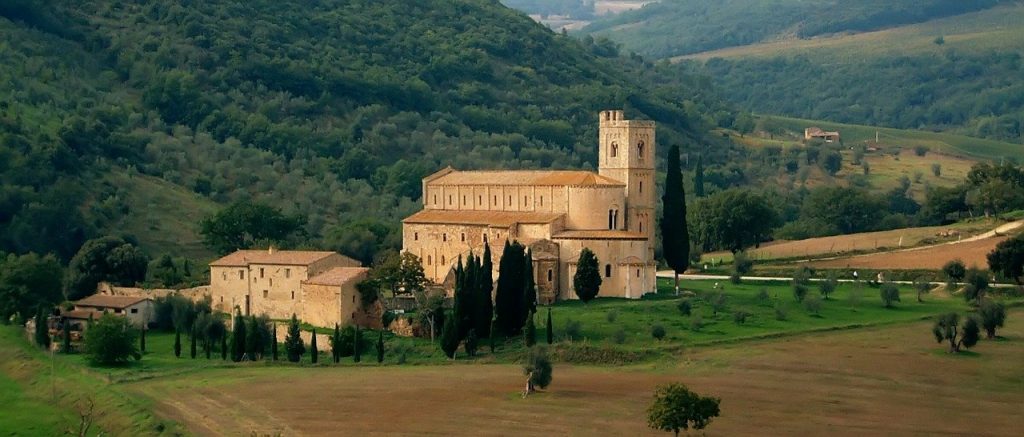 In 1406 Florence Pisa subjects permanently, whereas Prato had passed under its political domination in 1351. Shortly after the turn of Livorno (still a small port), while neither the Lucca Guinigi nor Petrucci of Siena can no longer compete with the splendor of Florentine humanism, with the creative fervor of his philosophical and literary circles.
With the Renaissance states consciously the centrality of man and nature (elements already being felt in the previous century). The more the civil society and the economy will move from the shackles of church doctrine and the feudal rule, the more he will appeal the decision and with awareness to the immediate reality of the physical and sensory perception. Tuscany became the largest workshop of ideas and inventions. The rigid patterns of the past give way to a free language, clear, well-articulated. A cultural enrichment so wide and deep is not found in any other part of the world at that time.
The fifteenth century is marked by the rise of the Medici family (originally from Mugello), which buys a hegemonic role in Florence until fully seize political power. In dismantling rival families (including the Albizzi) in 1434 the oligarchy becomes in fact, even if not in law, in a real lordship. The Medici rule with splendor, giving rise to vast commerce, industry, the arts and letters, which leads Florence to be rich and vibrant capital of a vast territory and cultural center like no other.
With its 100,000 inhabitants (London has a population of just 40,000!), The Tuscan city was at that time one of the largest centers in the world, comparable to today's New York. On the political, civil and cultural transformation of the old institutions in a new power and more clearly staff is fully embodied by Lorenzo de 'Medici, called "Il Magnifico", grandson of Cosimo the Elder and he took power in 1469. The wise policy of balance that he leads in relations with other States guarantees a long period of peace and prosperity, while his personal inclination to the things of art and its patronage mean that Florence reached its peak in those years. The face of the city is transformed. The new ideals are reflected not only in the construction of a large architectural structure, monumental and decorative, but in the placement of everything inside an urban redesigned according to the new conception of life. The protagonists of this new way of thinking are Filippo Brunelleschi (can you say that he was born with the modern architecture), Donatello, Alberti, Ghiberti, Masaccio, Botticelli, Piero della Francesca and Leonardo da Vinci himself.
During the great European conflict between the French monarchy and the Austro-Spanish, in the first half of the sixteenth century Tuscany was able to preserve its formal independence above all thanks to the wise policy of two nepotistic Medici popes (Leo X and Clement VII) and that of their grandson Cosimo I.
In 1406 Florence Pisa subjects permanently, whereas Prato had passed under its political domination in 1351. Shortly after the turn of Livorno (still a small port), while neither the Lucca Guinigi nor Petrucci of Siena can no longer compete with the splendor of Florentine humanism, with the creative fervor of his philosophical and literary circles.
With the Renaissance states consciously the centrality of man and nature (elements already being felt in the previous century). The more the civil society and the economy will move from the shackles of church doctrine and the feudal rule, the more he will appeal the decision and with awareness to the immediate reality of the physical and sensory perception. Tuscany became the largest workshop of ideas and inventions. The rigid patterns of the past give way to a free language, clear, well-articulated. A cultural enrichment so wide and deep is not found in any other part of the world at that time.
The fifteenth century is marked by the rise of the Medici family (originally from Mugello), which buys a hegemonic role in Florence until fully seize political power. In dismantling rival families (including the Albizzi) in 1434 the oligarchy becomes in fact, even if not in law, in a real lordship. The Medici rule with splendor, giving rise to vast commerce, industry, the arts and letters, which leads Florence to be rich and vibrant capital of a vast territory and cultural center like no other.
With its 100,000 inhabitants (London has a population of just 40,000!), The Tuscan city was at that time one of the largest centers in the world, comparable to today's New York. On the political, civil and cultural transformation of the old institutions in a new power and more clearly staff is fully embodied by Lorenzo de 'Medici, called "Il Magnifico", grandson of Cosimo the Elder and he took power in 1469. The wise policy of balance that he leads in relations with other States guarantees a long period of peace and prosperity, while his personal inclination to the things of art and its patronage mean that Florence reached its peak in those years. The face of the city is transformed. The new ideals are reflected not only in the construction of a large architectural structure, monumental and decorative, but in the placement of everything inside an urban redesigned according to the new conception of life. The protagonists of this new way of thinking are Filippo Brunelleschi (can you say that he was born with the modern architecture), Donatello, Alberti, Ghiberti, Masaccio, Botticelli, Piero della Francesca and Leonardo da Vinci himself.
During the great European conflict between the French monarchy and the Austro-Spanish, in the first half of the sixteenth century Tuscany was able to preserve its formal independence above all thanks to the wise policy of two nepotistic Medici popes (Leo X and Clement VII) and that of their grandson Cosimo I.
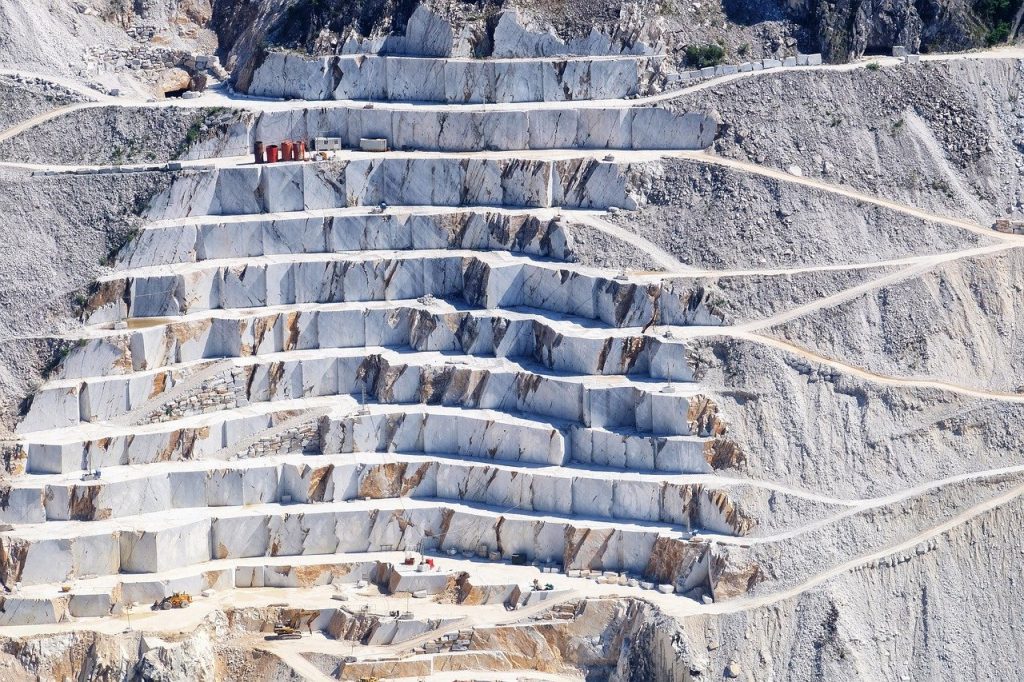 In a world divided between large and powerful centralized states Tuscany is struggling to maintain a leading role. At the beginning of the seventeenth century, the "virtue" Florentine weakens in all fields. The intellectual and artistic life continues to flourish there, but for some time the Medici popes in Rome tend to shift the center of culture attracting the Florentine genius (he was in Rome that Michelangelo died in 1564, the last great Florentine with which closes the splendid period of Florence).
Moreover, the seven Medici Grand Dukes are a few important principles. Among these Ferdinand I (1587 - 1609), which continues in all senses of the policy of the great Cosimo I and gives new impetus to the historically most important of the Grand Duchy: the port of Livorno. This, thanks to a policy of free opening to vessels and foreign goods, quickly rose to the role of important emporium Mediterranean. Livorno became the second city of the Grand Duchy, after Florence, the number of inhabitants and industry enterprises. Meanwhile Prato with its thriving textile industry had increased prestige in the Grand Duchy and the Italian and European markets, despite protective laws in favor of the Medici Florentine textile manufacturing mill Prato was able to adapt to the new rules of production and continued his rise to become up to the city's most important textile center of Tuscany.
Florence, as a manufacturing center, maintained a certain superiority over the other cities also thanks to the privileges granted in favor of the craft guilds. In the other centers, the administration remained focused in an oligarchy that shrank more and more in a small town patricians, which gradually awarded her titles of nobility (accounts, marquises, barons). The most vivid of this aristocracy engaged occasionally in companies against the Turks (who saw the Tuscany ally of the Empire), or for the defense of freedom of navigation in the Tyrrhenian Sea (in accordance with the Order of the Knights of St. Stephen, based in Pisa). Some of the Medici princes had propensity for studies, promoted research and collections of works of art.
In Florence developed a new environment, one of the Academies, which gathered scholars attentive assiduously engaged in setting the standards of literary and artistic genres. Since then the academies flourished throughout the world. Among those born in Florence, the most famous was (and still is) the Accademia della Crusca, which in 1612 published the first dictionary of the Italian language.
One must not forget the three Tuscan universities. Among these, in the seventeenth century, was certainly the most vivid Pisa, also favored by the generosity of the Grand Duke Ferdinand II (1621 - 1670) who protected the great Pisa Galileo Galilei
Throughout the seventeenth century, the Medici dynasty is weakening until the beginning of 700, the Grand Duchy of Tuscany become a European problem.
In fact, none of the two sons of Cosimo III (1670 - 1722) had no heirs. When he died in 1737 Gian Gastone, the last Medici, were the great powers to decide: Tuscany would be given to Francis Stephen, former duke of Lorraine and husband of Maria Theresa, the only daughter of Emperor Charles VI. These, however, was limited to a formal visit to Florence in 1739 (of which memory remains within the triumph of the Porta San Gallo), then entrusting the care of the Grand Duchy to a regency council and an army composed of Lorraine and Lombardy .
The Grand Duchy loses all autonomy and became a satellite of the empire. But in the second half of the eighteenth century the spontaneous awakening of indigenous forces, not thwarted by the governors regents, makes the Tuscany begins to recover from the stupor into which it had fallen under the last Medici Grand Dukes. In 1753 the illustrious names of the nobility and the bourgeoisie intellectual give life to the Georgofili Academy, through which we express the interests of Tuscany no longer manufacturing but essentially agrarian and mercantile.
With Peter Leopold (1765 -1790) the Grand Duchy of Tuscany, the second-parentage of the House of Habsburg-Lorraine, buy genuine autonomy. In a Tuscany where agriculture has become the main activity, while industry and commerce lose their importance with the exception of the territory of Prato textile now suited to the activity and the marketing of its products, the Grand Duke introduces a series of reforms . In 1770 is established, among other things, a Chamber of Commerce of Arts and Manufactures, the first in Italy.
Ferdinand III, the successor of Peter Leopold (who became emperor in 1790), failed to prevent the occupation of Tuscany by the French troops of Napoleon.
This occupation lasted from 1799 to 1814. At first (in 1801) Florence was the capital of the kingdom of Etruria (which Napoleon gave to the Bourbons of Parma), later (in 1807) Tuscany, combined with the great French empire was divided into three departments, which were then again together in one grand duchy (entrusted by Napoleon's sister Elisa Baiocchi).
The restoration of 1814 was run by Ferdinand III, who ended up destroying all freedom municipal appointing himself gonfalonieri of the city. But the French occupation had introduced in the new educated class of the country a beacon of freedom and national independence, which the Grand Dukes were against it (being related to Austrian politics).
The public, therefore, gradually begins to detach from them. Giampiero Vieusseux founded in 1819 in Florence the namesake Cabinet of reading and discussion, which soon became the center of new ideas based on the desire for independence in the framework of a unified Italy. Florence, through the power of these ideas and also for its outstanding tradition goes back to being the intellectual center of Italy and one of the most important in Europe.
In Florence, staying all the wits of the Young Italy (including Foscolo, Manzoni, Leopardi, Tommaseo), but also illustrious foreigners like Chateaubriand, Shelley, Byron, von Platen. Since 1824 the new Grand Duke Leopold II of Tuscany strives to make a modern state reclaiming the Maremma, stimulating businesses Prato and Livorno, subsidizing the construction of railway lines and even by building between Florence and Pisa (in 1846) the first telegraph line in Italy. But between Leopold and his people has opened a furrow no longer fill. During the uprising of 1848, the Grand Duke flees to Rome and then to Gaeta.
The following year he returned to Florence with the support of the Austrian troops, but will have to resign themselves to a definitive exile when, in 1859, war broke out between the King of Sardinia (supported by France) and Austria.
In Florence, it constitutes a provisional government and, in 1860, is organized by Bettino Ricasoli a plebiscite which ratifies the annexation of the whole country in the Kingdom of Sardinia-Piedmont. So April 16, 1860 Vittorio Emanuele II enters the Florence, consciously abandoning its tradition of freedom to meet in the great common homeland. The city immediately established itself as one of the essential centers of united Italy. In 1861 is set up in Florence the first Italian exhibition industry and craft. Founded the newspaper "The Nation", with the significant title. A few years later (in 1865) Florence became the first capital of the kingdom of Italy. A few years later, however, the capital and the government moved to Rome, Florence and becomes again a regional center where there are the archbishop, a Court of Appeals, a command of the corps, a Director of Education.
Since Tuscany is essentially an agricultural country, Florence is especially a big market of wine, oil, grain and livestock. They develop, however, also some key industries such as foundry Pinion (which uses the iron of the island) and the factory of optics and precision instruments that takes the name of Galileo. Meanwhile, Florence is transformed, making the accommodations provided by the architect Giuseppe Poggi, including the circle of boulevards.
In a world divided between large and powerful centralized states Tuscany is struggling to maintain a leading role. At the beginning of the seventeenth century, the "virtue" Florentine weakens in all fields. The intellectual and artistic life continues to flourish there, but for some time the Medici popes in Rome tend to shift the center of culture attracting the Florentine genius (he was in Rome that Michelangelo died in 1564, the last great Florentine with which closes the splendid period of Florence).
Moreover, the seven Medici Grand Dukes are a few important principles. Among these Ferdinand I (1587 - 1609), which continues in all senses of the policy of the great Cosimo I and gives new impetus to the historically most important of the Grand Duchy: the port of Livorno. This, thanks to a policy of free opening to vessels and foreign goods, quickly rose to the role of important emporium Mediterranean. Livorno became the second city of the Grand Duchy, after Florence, the number of inhabitants and industry enterprises. Meanwhile Prato with its thriving textile industry had increased prestige in the Grand Duchy and the Italian and European markets, despite protective laws in favor of the Medici Florentine textile manufacturing mill Prato was able to adapt to the new rules of production and continued his rise to become up to the city's most important textile center of Tuscany.
Florence, as a manufacturing center, maintained a certain superiority over the other cities also thanks to the privileges granted in favor of the craft guilds. In the other centers, the administration remained focused in an oligarchy that shrank more and more in a small town patricians, which gradually awarded her titles of nobility (accounts, marquises, barons). The most vivid of this aristocracy engaged occasionally in companies against the Turks (who saw the Tuscany ally of the Empire), or for the defense of freedom of navigation in the Tyrrhenian Sea (in accordance with the Order of the Knights of St. Stephen, based in Pisa). Some of the Medici princes had propensity for studies, promoted research and collections of works of art.
In Florence developed a new environment, one of the Academies, which gathered scholars attentive assiduously engaged in setting the standards of literary and artistic genres. Since then the academies flourished throughout the world. Among those born in Florence, the most famous was (and still is) the Accademia della Crusca, which in 1612 published the first dictionary of the Italian language.
One must not forget the three Tuscan universities. Among these, in the seventeenth century, was certainly the most vivid Pisa, also favored by the generosity of the Grand Duke Ferdinand II (1621 - 1670) who protected the great Pisa Galileo Galilei
Throughout the seventeenth century, the Medici dynasty is weakening until the beginning of 700, the Grand Duchy of Tuscany become a European problem.
In fact, none of the two sons of Cosimo III (1670 - 1722) had no heirs. When he died in 1737 Gian Gastone, the last Medici, were the great powers to decide: Tuscany would be given to Francis Stephen, former duke of Lorraine and husband of Maria Theresa, the only daughter of Emperor Charles VI. These, however, was limited to a formal visit to Florence in 1739 (of which memory remains within the triumph of the Porta San Gallo), then entrusting the care of the Grand Duchy to a regency council and an army composed of Lorraine and Lombardy .
The Grand Duchy loses all autonomy and became a satellite of the empire. But in the second half of the eighteenth century the spontaneous awakening of indigenous forces, not thwarted by the governors regents, makes the Tuscany begins to recover from the stupor into which it had fallen under the last Medici Grand Dukes. In 1753 the illustrious names of the nobility and the bourgeoisie intellectual give life to the Georgofili Academy, through which we express the interests of Tuscany no longer manufacturing but essentially agrarian and mercantile.
With Peter Leopold (1765 -1790) the Grand Duchy of Tuscany, the second-parentage of the House of Habsburg-Lorraine, buy genuine autonomy. In a Tuscany where agriculture has become the main activity, while industry and commerce lose their importance with the exception of the territory of Prato textile now suited to the activity and the marketing of its products, the Grand Duke introduces a series of reforms . In 1770 is established, among other things, a Chamber of Commerce of Arts and Manufactures, the first in Italy.
Ferdinand III, the successor of Peter Leopold (who became emperor in 1790), failed to prevent the occupation of Tuscany by the French troops of Napoleon.
This occupation lasted from 1799 to 1814. At first (in 1801) Florence was the capital of the kingdom of Etruria (which Napoleon gave to the Bourbons of Parma), later (in 1807) Tuscany, combined with the great French empire was divided into three departments, which were then again together in one grand duchy (entrusted by Napoleon's sister Elisa Baiocchi).
The restoration of 1814 was run by Ferdinand III, who ended up destroying all freedom municipal appointing himself gonfalonieri of the city. But the French occupation had introduced in the new educated class of the country a beacon of freedom and national independence, which the Grand Dukes were against it (being related to Austrian politics).
The public, therefore, gradually begins to detach from them. Giampiero Vieusseux founded in 1819 in Florence the namesake Cabinet of reading and discussion, which soon became the center of new ideas based on the desire for independence in the framework of a unified Italy. Florence, through the power of these ideas and also for its outstanding tradition goes back to being the intellectual center of Italy and one of the most important in Europe.
In Florence, staying all the wits of the Young Italy (including Foscolo, Manzoni, Leopardi, Tommaseo), but also illustrious foreigners like Chateaubriand, Shelley, Byron, von Platen. Since 1824 the new Grand Duke Leopold II of Tuscany strives to make a modern state reclaiming the Maremma, stimulating businesses Prato and Livorno, subsidizing the construction of railway lines and even by building between Florence and Pisa (in 1846) the first telegraph line in Italy. But between Leopold and his people has opened a furrow no longer fill. During the uprising of 1848, the Grand Duke flees to Rome and then to Gaeta.
The following year he returned to Florence with the support of the Austrian troops, but will have to resign themselves to a definitive exile when, in 1859, war broke out between the King of Sardinia (supported by France) and Austria.
In Florence, it constitutes a provisional government and, in 1860, is organized by Bettino Ricasoli a plebiscite which ratifies the annexation of the whole country in the Kingdom of Sardinia-Piedmont. So April 16, 1860 Vittorio Emanuele II enters the Florence, consciously abandoning its tradition of freedom to meet in the great common homeland. The city immediately established itself as one of the essential centers of united Italy. In 1861 is set up in Florence the first Italian exhibition industry and craft. Founded the newspaper "The Nation", with the significant title. A few years later (in 1865) Florence became the first capital of the kingdom of Italy. A few years later, however, the capital and the government moved to Rome, Florence and becomes again a regional center where there are the archbishop, a Court of Appeals, a command of the corps, a Director of Education.
Since Tuscany is essentially an agricultural country, Florence is especially a big market of wine, oil, grain and livestock. They develop, however, also some key industries such as foundry Pinion (which uses the iron of the island) and the factory of optics and precision instruments that takes the name of Galileo. Meanwhile, Florence is transformed, making the accommodations provided by the architect Giuseppe Poggi, including the circle of boulevards.
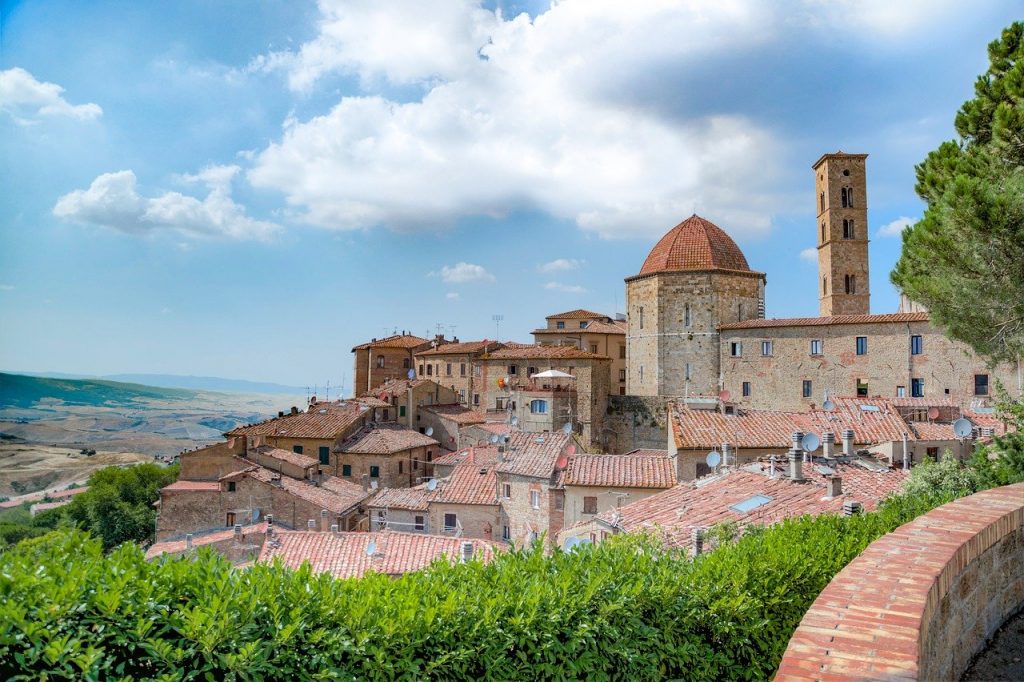 The quality of the University attracts eminent scholars, thanks to the presence of which Florence continues to be the intellectual center of Italy. Together with Milan, Florence is also one of the two centers of Italian. The Florentine craftsmanship retains a unique quality and is expressed in products such as embroidery, finished leather, ceramics, sculptures, mosaics, carved wood, the metals, glass art and the famous woven straw. In Prato, by mid-century, the textile activity takes on the dimension of modern industry as a result of the industrial revolution that brings substantial innovations on machinery and technology.
In the first decade of the twentieth century intellectual life in Tuscany, which had been flourishing in the Grand Duchy of Lorraine and had then sold a little in Rome, Milan and Naples, was resuscitated by literary movements and political ideas promoted by magazines Florentine national level as "The Voice" of Prezzolini and Papini or "The Kingdom" by Corradini.
The enlargement of the right to vote, and the universal suffrage, re-strengthened the positions of the Left in many medium and rural areas, while the Catholics allied with the Liberals against the Socialists who were particularly serious because of the increasing industrialization of the country ( yards Orlando in Livorno, the woolen mills of Prato, the paper mills of Lima, the industry of Larderello, etc. ..).
However, the class conflicts, the emergence of the first socialist municipalities, the rise of new political forces and the decline of others did not constitute an obstacle to the overall advancement of the region which, like the whole of Italy, could see the golden age of the early decades of the century.
The First World War (1914 - 1918), who surprises Tuscany in a phase of considerable industrial development, had a series of economic and political repercussions that gave rise to a period of violent unrest, common to most of Italy.
After 1922, Tuscany subdued the fascist dictatorship. The brave attempts at opposition (including that of the magazine "Do not give up") died down quickly under the violence of the persecution that culminated in 1925 in Florence, with a series of killings. In World War II (1940 - 1945) Tuscan towns were also exposed to heavy bombardments, with considerable damage especially in Livorno, Pisa and Florence. The terrible military events, and the feeling of imminent collapse of fascism, fast covert reconstitution of the various parties and the beginning of a struggle that, after September 8, 1943, became a battle against the Germans. The local population, both urban and rural, gave a great contribution to the blood of courage and endurance, and also in Tuscany there were fierce reprisals against partisans.
Peace is restored in the 1946 referendum Tuscany, by a large majority in favor of the establishment of the republic. Since then the region has made remarkable contributions of men who have often held leading positions in national political life. In economic terms, the success of small and medium industries and crafts has consolidated the prestige of Tuscany at the international level. But one of the most thriving of Tuscany contemporary tourism, whose strengths are constituted not only by the beauty and variety of the environment, the size that gave extraordinary geniuses of centuries past. The rich travelers of the eighteenth century and the writers, artists and aesthetes of the nineteenth century is happening, now, crowds of tourists who come to contemplate some of the most wonderful man.
The Tuscany of today has retained, modified, its universal character which does not depend so much the expansion of its markets and its products as the human quality of the masterpieces that guards and the various origins of the crowds that visit.
The quality of the University attracts eminent scholars, thanks to the presence of which Florence continues to be the intellectual center of Italy. Together with Milan, Florence is also one of the two centers of Italian. The Florentine craftsmanship retains a unique quality and is expressed in products such as embroidery, finished leather, ceramics, sculptures, mosaics, carved wood, the metals, glass art and the famous woven straw. In Prato, by mid-century, the textile activity takes on the dimension of modern industry as a result of the industrial revolution that brings substantial innovations on machinery and technology.
In the first decade of the twentieth century intellectual life in Tuscany, which had been flourishing in the Grand Duchy of Lorraine and had then sold a little in Rome, Milan and Naples, was resuscitated by literary movements and political ideas promoted by magazines Florentine national level as "The Voice" of Prezzolini and Papini or "The Kingdom" by Corradini.
The enlargement of the right to vote, and the universal suffrage, re-strengthened the positions of the Left in many medium and rural areas, while the Catholics allied with the Liberals against the Socialists who were particularly serious because of the increasing industrialization of the country ( yards Orlando in Livorno, the woolen mills of Prato, the paper mills of Lima, the industry of Larderello, etc. ..).
However, the class conflicts, the emergence of the first socialist municipalities, the rise of new political forces and the decline of others did not constitute an obstacle to the overall advancement of the region which, like the whole of Italy, could see the golden age of the early decades of the century.
The First World War (1914 - 1918), who surprises Tuscany in a phase of considerable industrial development, had a series of economic and political repercussions that gave rise to a period of violent unrest, common to most of Italy.
After 1922, Tuscany subdued the fascist dictatorship. The brave attempts at opposition (including that of the magazine "Do not give up") died down quickly under the violence of the persecution that culminated in 1925 in Florence, with a series of killings. In World War II (1940 - 1945) Tuscan towns were also exposed to heavy bombardments, with considerable damage especially in Livorno, Pisa and Florence. The terrible military events, and the feeling of imminent collapse of fascism, fast covert reconstitution of the various parties and the beginning of a struggle that, after September 8, 1943, became a battle against the Germans. The local population, both urban and rural, gave a great contribution to the blood of courage and endurance, and also in Tuscany there were fierce reprisals against partisans.
Peace is restored in the 1946 referendum Tuscany, by a large majority in favor of the establishment of the republic. Since then the region has made remarkable contributions of men who have often held leading positions in national political life. In economic terms, the success of small and medium industries and crafts has consolidated the prestige of Tuscany at the international level. But one of the most thriving of Tuscany contemporary tourism, whose strengths are constituted not only by the beauty and variety of the environment, the size that gave extraordinary geniuses of centuries past. The rich travelers of the eighteenth century and the writers, artists and aesthetes of the nineteenth century is happening, now, crowds of tourists who come to contemplate some of the most wonderful man.
The Tuscany of today has retained, modified, its universal character which does not depend so much the expansion of its markets and its products as the human quality of the masterpieces that guards and the various origins of the crowds that visit.
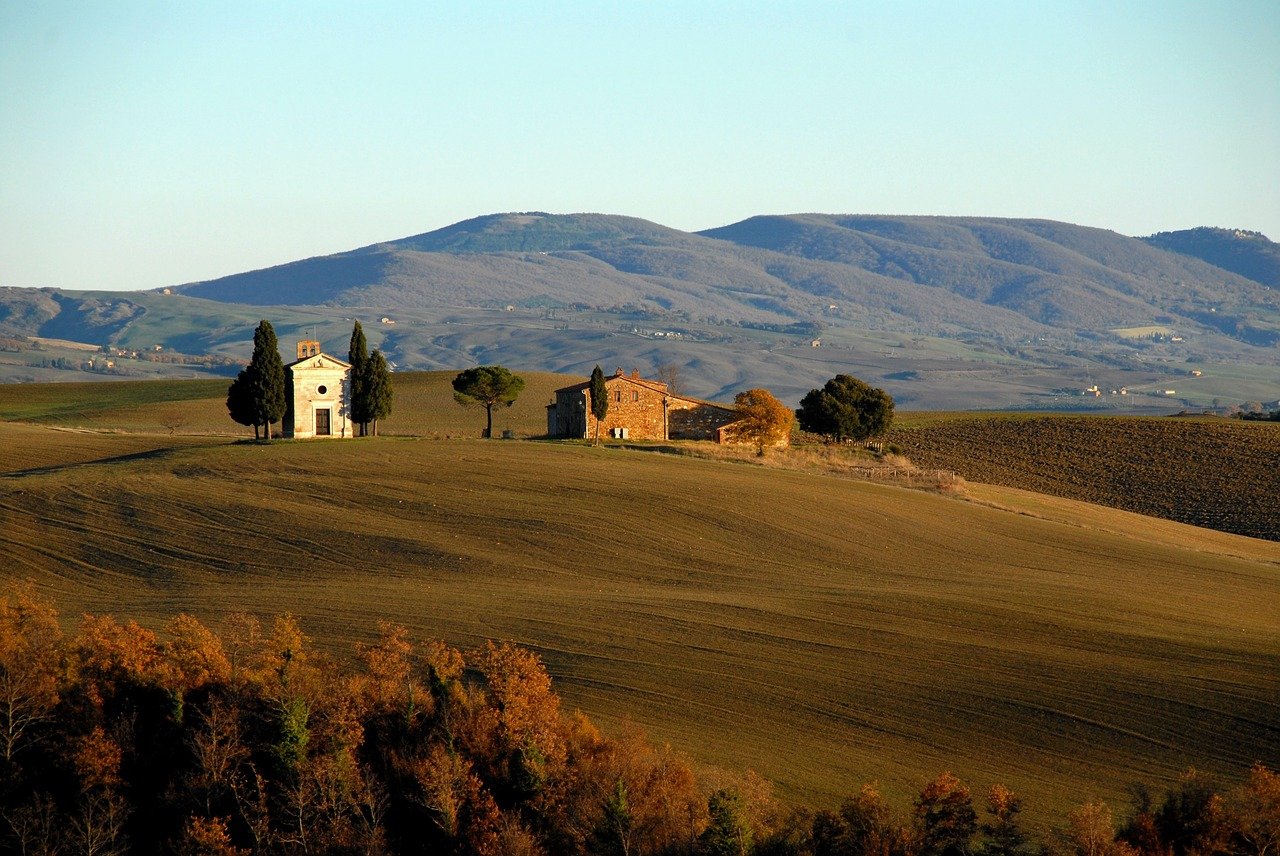

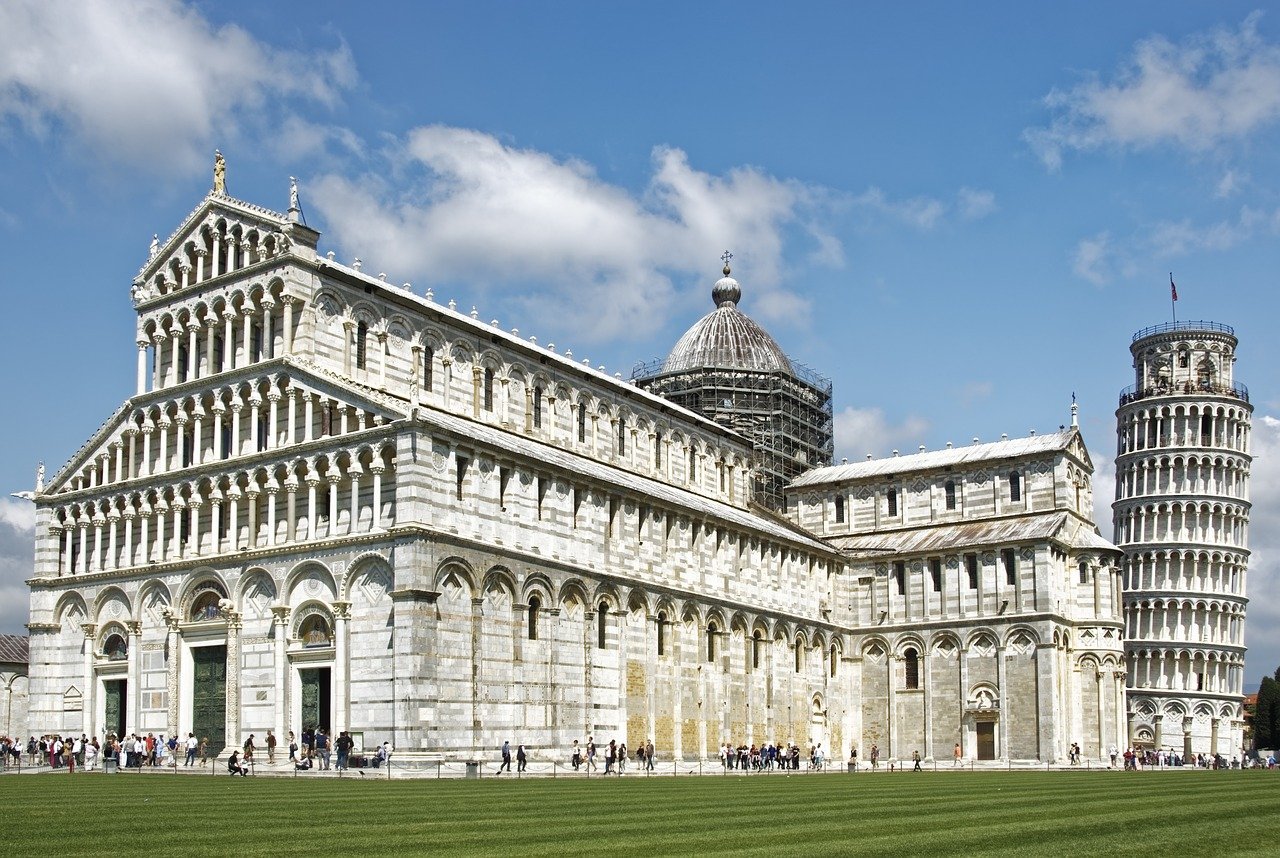
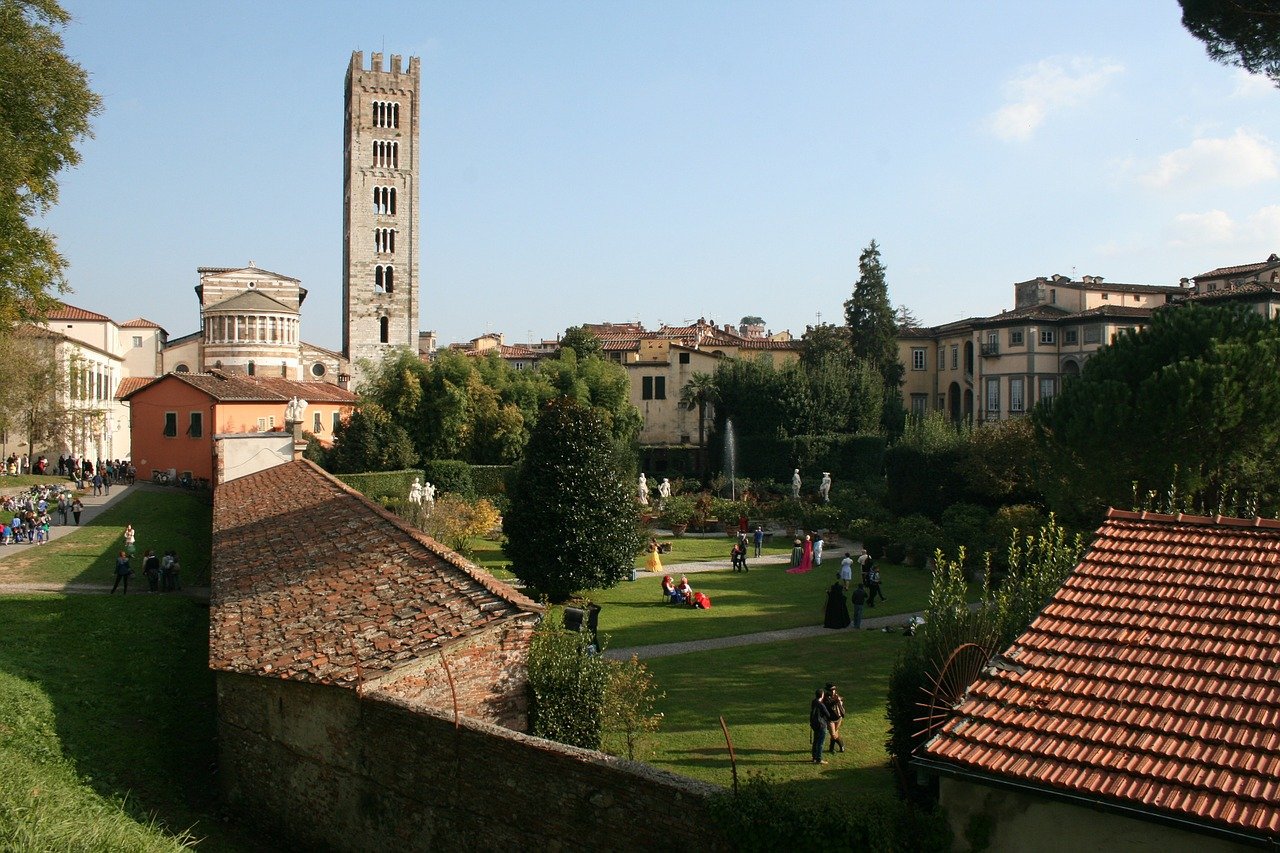
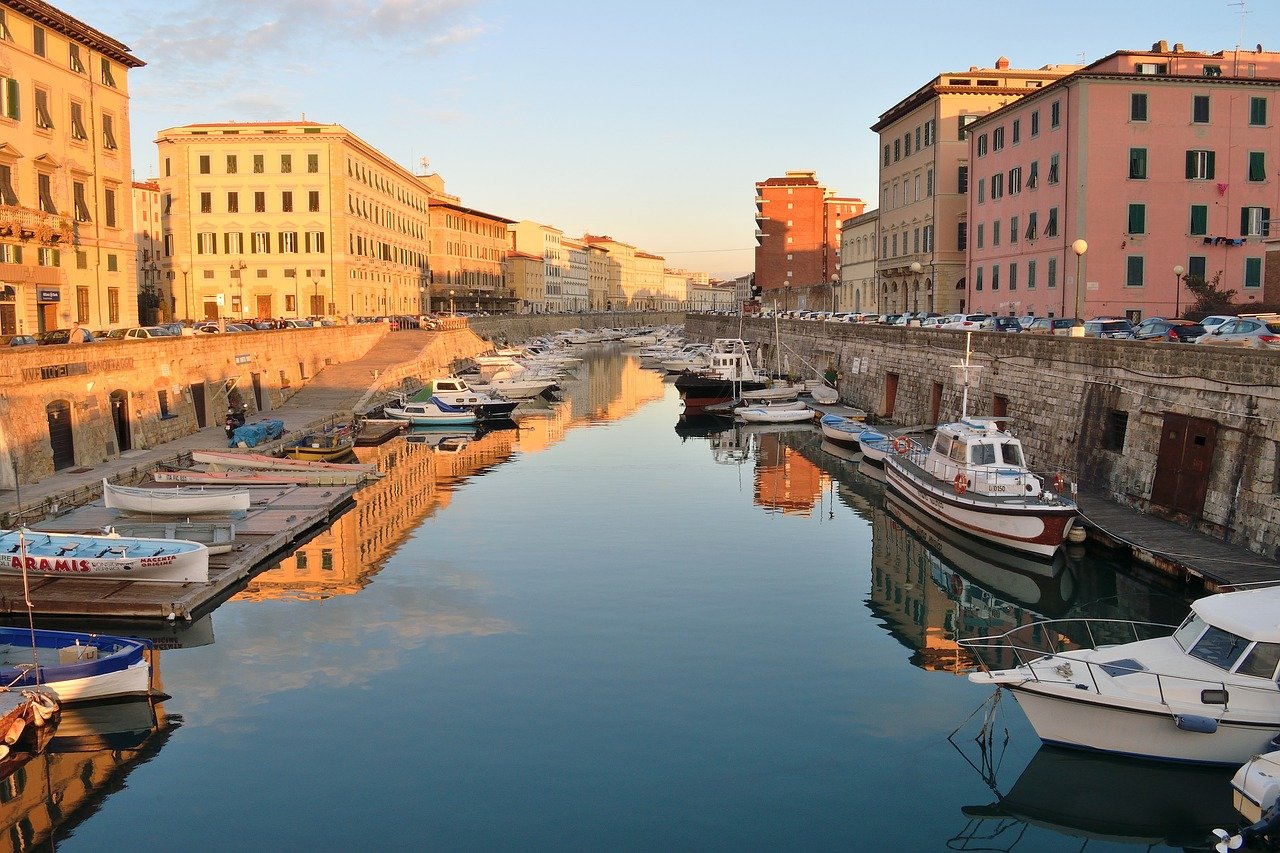
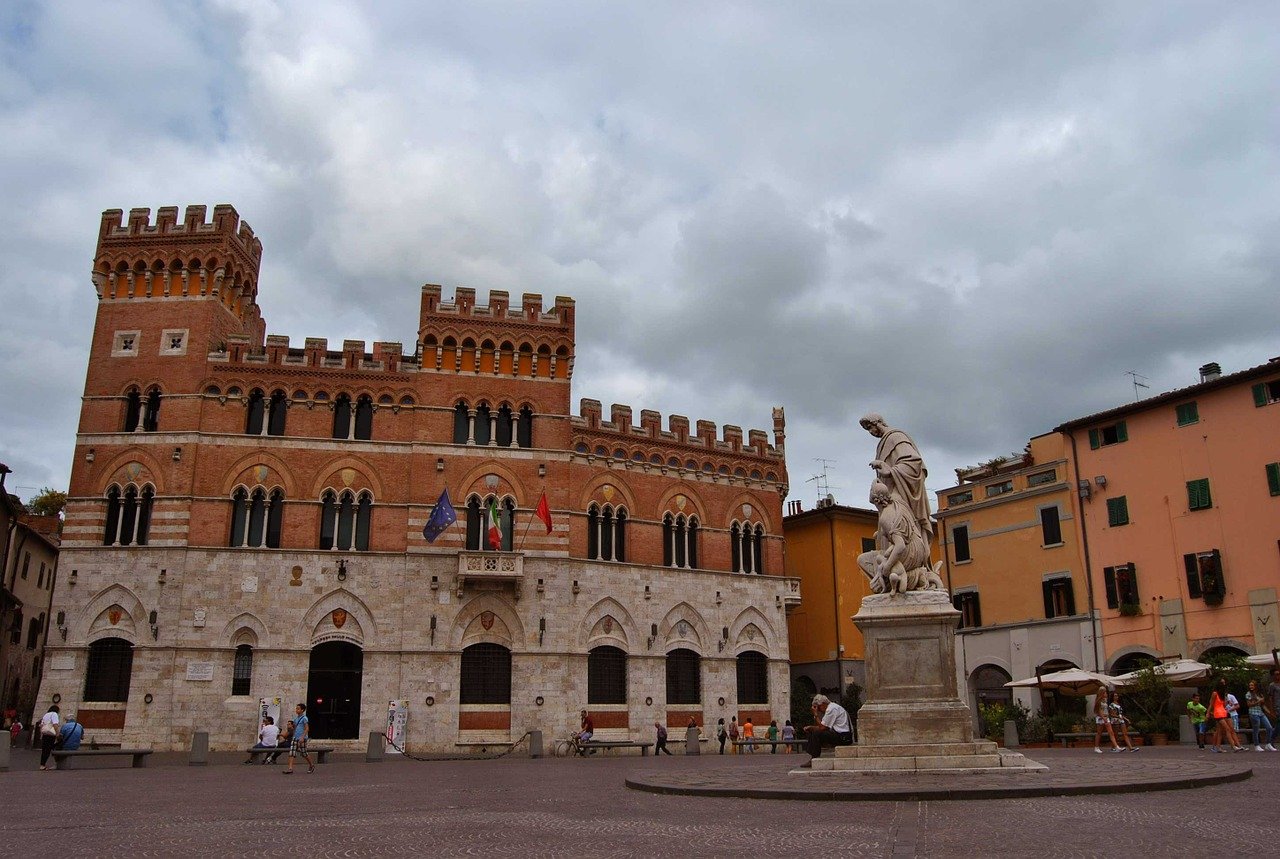
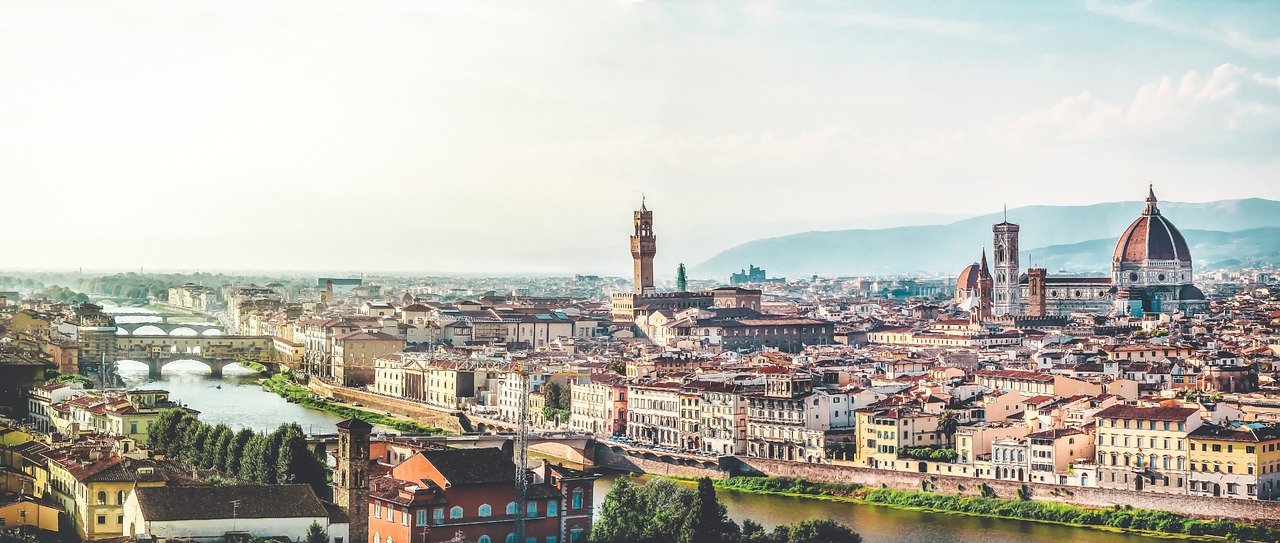
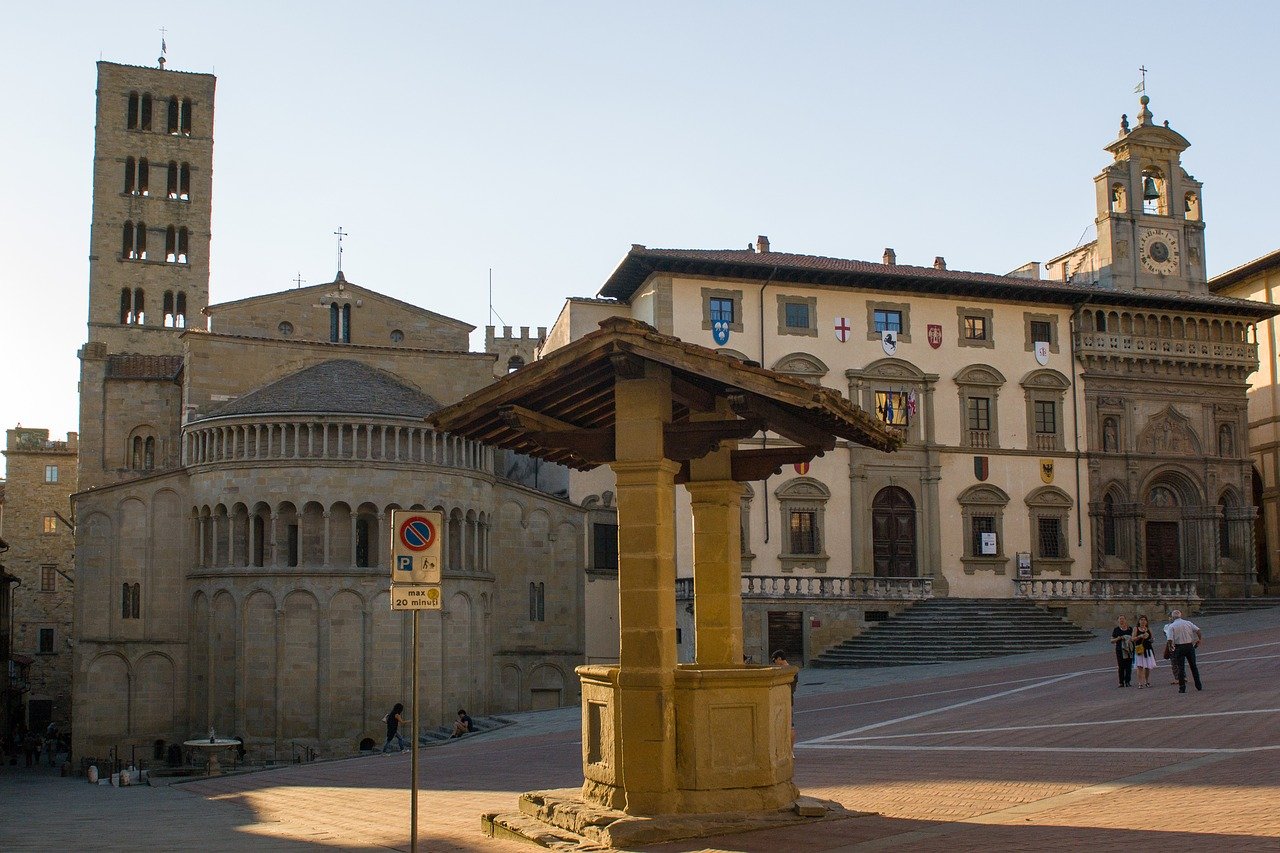
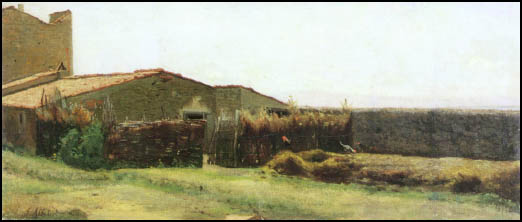
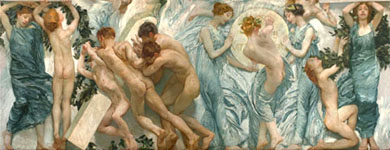 Edward Borrani
Pasture in Castiglioncello (1861)
oil on canvas, cm 30,5 x84
Signed lower left: O. Borrani
He went during the summer of 1861 along with Sernesi Pistoia Apennines, Borrani fails to show up at the Promoter of the same year with Florentine works in that location, so as to be ascribed to Yorick in the "school news" in the same way by Signorini and Cabianca, in turn vets stay in La Spezia: "The gentlemen Cabianca, Signorini and Borrani belong to the school news that effects people of the call, and exhibit three paintings according to their consciences" (Yorick, 1861, p. 177). The technical testing initiated by Borrani during their stay in St. Marcello Pistoiese is deepened in the presence of the scenarios of Castiglioncello, with outcomes similar to those of Sernesi brightness, according to the well-known comparison established by Cecchi in 1926 between La Punta del Romito view from Castiglioncello of Sernesi (1864) from Castiglioncello and Vada view of Borrani (1864), considered by the critical work of the same hand. In this pasture, the artist expresses an impression on the other hand absolutely individual, which is the same as Orto in Castiglioncello (1862-1864) and House and marina in Castiglioncello (1862-1864), according to which the investigation of the suit harmony of nature coastal combines the interest for the life of the fields returned through the epic story of peasants outlined with elegant draughtsmanship of ancient setting. It is precisely the definition of compositional groups, usually peasants surrounded by animals, which captures the artist's draughtsmanship wisdom, gained from the study of the frescoes by Paolo Uccello in the Green Cloister of Santa Maria Novella and Giotto in the church of Santa Croce (Cecioni, 1905, p, 339), as well as that solid plastic, consistent with the research chiaroscuro typical of his "excessive fanaticism for the new art" (ibid., p. 338).
Edward Borrani
Pasture in Castiglioncello (1861)
oil on canvas, cm 30,5 x84
Signed lower left: O. Borrani
He went during the summer of 1861 along with Sernesi Pistoia Apennines, Borrani fails to show up at the Promoter of the same year with Florentine works in that location, so as to be ascribed to Yorick in the "school news" in the same way by Signorini and Cabianca, in turn vets stay in La Spezia: "The gentlemen Cabianca, Signorini and Borrani belong to the school news that effects people of the call, and exhibit three paintings according to their consciences" (Yorick, 1861, p. 177). The technical testing initiated by Borrani during their stay in St. Marcello Pistoiese is deepened in the presence of the scenarios of Castiglioncello, with outcomes similar to those of Sernesi brightness, according to the well-known comparison established by Cecchi in 1926 between La Punta del Romito view from Castiglioncello of Sernesi (1864) from Castiglioncello and Vada view of Borrani (1864), considered by the critical work of the same hand. In this pasture, the artist expresses an impression on the other hand absolutely individual, which is the same as Orto in Castiglioncello (1862-1864) and House and marina in Castiglioncello (1862-1864), according to which the investigation of the suit harmony of nature coastal combines the interest for the life of the fields returned through the epic story of peasants outlined with elegant draughtsmanship of ancient setting. It is precisely the definition of compositional groups, usually peasants surrounded by animals, which captures the artist's draughtsmanship wisdom, gained from the study of the frescoes by Paolo Uccello in the Green Cloister of Santa Maria Novella and Giotto in the church of Santa Croce (Cecioni, 1905, p, 339), as well as that solid plastic, consistent with the research chiaroscuro typical of his "excessive fanaticism for the new art" (ibid., p. 338).
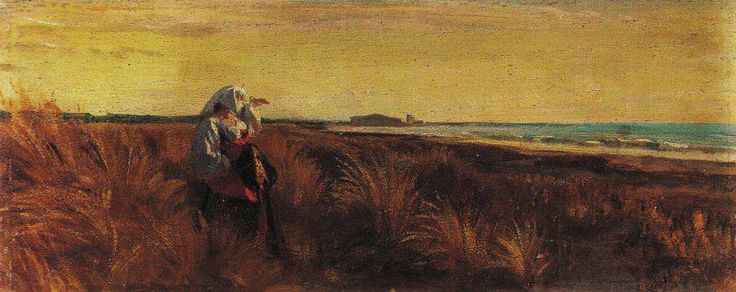 John Costa
One evening in the Maremma 1855
oil on canvas, cm 10,6 x27, 5
Signed and dated on the back by the artist:
One evening in Maremma Giovanni Costa 1855
On the basis of this affinity with the painting preserved at Castle Howard, exhibited at the New Gallery in 1890 with the title Bocca d'Arno (1889), Nicholls advances already in 1982 the idea of a setting on the Tuscan coast, until, as a result of further study of the architecture depicted in the background, the same be Nicholls concludes the coastal town of Lorraine at the fort of Bocca d'Arno, where, among other things, the artist in his memoirs that he had entertained guest at the customs officers around 1856. The commitment of Nino Costa at Marina di Pisa is substantiated by a color and Atmospheric Research, which aims to accentuate the striking note of the location, as in this sunset effect, in which the pitch of heaven repeats the golden range of coastal vegetation , albeit in a shade brighter, to confirm what the artist to concentrate on specific issues and techniques to discuss it with students who assisted him in his routes. The influence of the Roman in Tuscany, identified by Cecioni as "the most beautiful and most important page of the artistic life of the Coast" (Cecioni, 1905, p. 327) coincides with indications of a stylistic as well as expressive as refers Discovolo later, Antonio: "All of a sudden he stopped and with an eye toward the sky and said," You see there, under that blue, there's the red, as there is blood under the skin. Keep this in mind when you paint. The preparation of a painting is of great importance "(Discovolo 1983, pp.. 63-64).
John Costa
One evening in the Maremma 1855
oil on canvas, cm 10,6 x27, 5
Signed and dated on the back by the artist:
One evening in Maremma Giovanni Costa 1855
On the basis of this affinity with the painting preserved at Castle Howard, exhibited at the New Gallery in 1890 with the title Bocca d'Arno (1889), Nicholls advances already in 1982 the idea of a setting on the Tuscan coast, until, as a result of further study of the architecture depicted in the background, the same be Nicholls concludes the coastal town of Lorraine at the fort of Bocca d'Arno, where, among other things, the artist in his memoirs that he had entertained guest at the customs officers around 1856. The commitment of Nino Costa at Marina di Pisa is substantiated by a color and Atmospheric Research, which aims to accentuate the striking note of the location, as in this sunset effect, in which the pitch of heaven repeats the golden range of coastal vegetation , albeit in a shade brighter, to confirm what the artist to concentrate on specific issues and techniques to discuss it with students who assisted him in his routes. The influence of the Roman in Tuscany, identified by Cecioni as "the most beautiful and most important page of the artistic life of the Coast" (Cecioni, 1905, p. 327) coincides with indications of a stylistic as well as expressive as refers Discovolo later, Antonio: "All of a sudden he stopped and with an eye toward the sky and said," You see there, under that blue, there's the red, as there is blood under the skin. Keep this in mind when you paint. The preparation of a painting is of great importance "(Discovolo 1983, pp.. 63-64).